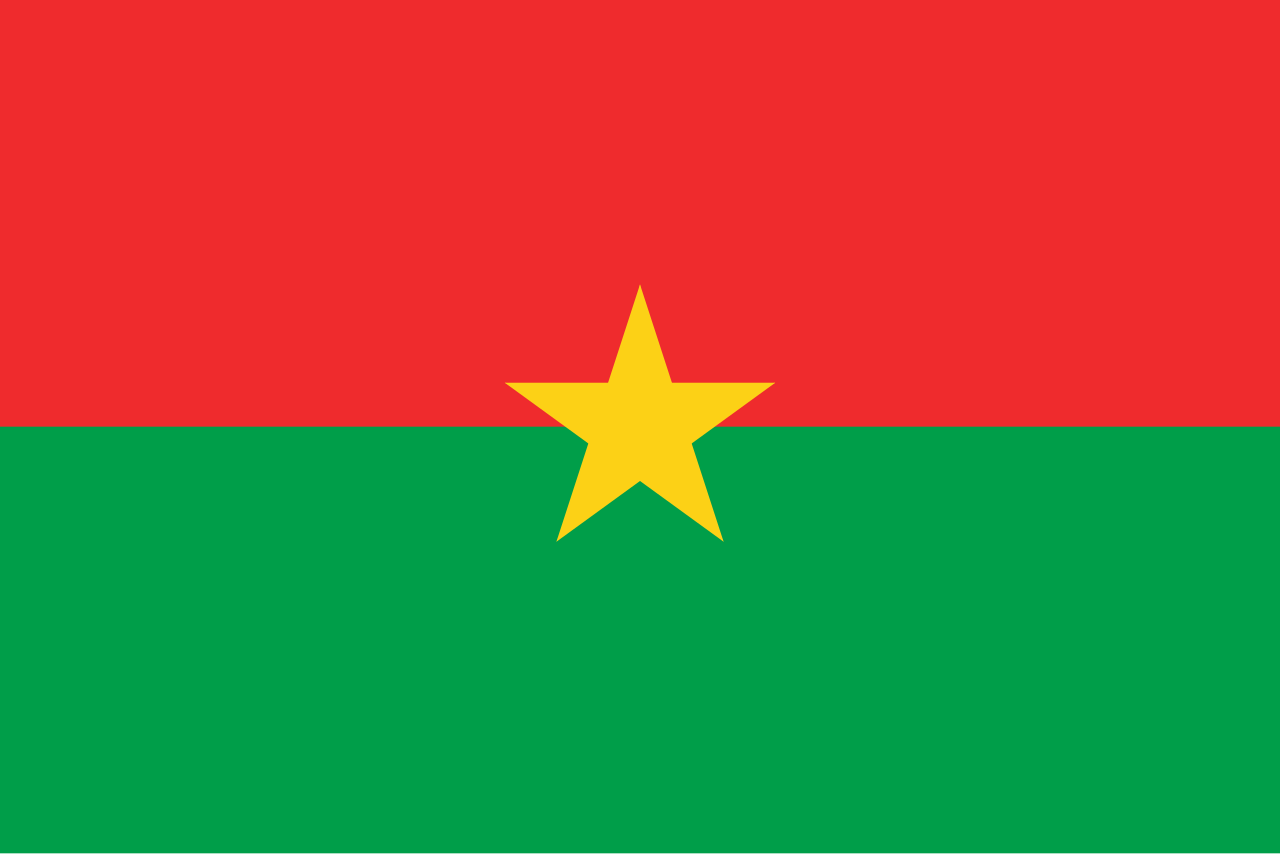The flag of Burkina Faso is a striking representation of the country’s revolutionary spirit and its rich natural resources. It consists of two horizontal bands: red on the top and green on the bottom, divided evenly. In the center, a prominent yellow five-pointed star is positioned, symbolizing the guiding light of the revolution and hope for the future.
Each color in the flag has a significant meaning rooted in the country’s history and values:
- Red represents the sacrifices and struggles of the people during the revolution, particularly the 1983 coup led by Thomas Sankara, which aimed to bring social and economic reforms.
- Green symbolizes the fertile land, agriculture, and the abundance of natural resources in Burkina Faso, reflecting the hope for prosperity and growth.
- Yellow, seen in the star, signifies the wealth of mineral resources in the country and is also a symbol of unity and progress under a common goal for a brighter future.
Adopted on August 4, 1984, following Sankara’s revolution, this flag marked the country’s departure from its colonial past, as it replaced the previous flag of Upper Volta when the nation was renamed Burkina Faso, which means “the land of upright people” in the local languages Mossi and Dioula. The flag stands as a powerful reminder of the country’s revolutionary ideals and its aspirations for a self-sufficient and just society.
